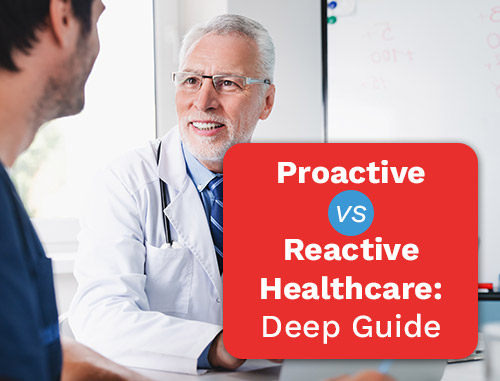Who Is Patient 2.0 and Why Should You Care?
Posted on Today’s typical patient is dramatically different from the typical patient a generation ago. According to Pew Research, nine out of 10 American adults now use the Internet regularly. And that figure is even higher among certain demographics. For example, Internet usage includes 99 percent of those living in households earning $75,000 or more. Among people aged 18-29 and people who hold college degrees, Internet usage is now 97 percent. And that’s not all…
Patients have evolved
The Internet and its massive popularity have led to the evolution of your typical healthcare patient. Instead of looking for healthcare practices by scanning the heavy, printed Yellow Pages directory or asking a relative, today’s prospective new patient typically logs on to the Internet and uses a search engine such as Google and various search terms or keywords to find either a branded website, branded social media pages or branded online review sites. How good is your SEO? Good enough to land you on the first or second page of search engine results? Most people never search beyond second- or third-page results.
Today’s patient researches these online media sources before he or she ever makes a decision to contact a practice. This holds true even if the patient is referred to a specific doctor or healthcare practice by another patient or doctor, or if the patient is responding to some branded external marketing message such as a print ad, TV commercial or direct mail.
Patients trust peers, not advertising claims
Say hello to Patient 2.0. Patient 2.0 does not trust traditional advertising. Patient 2.0 only trusts those in his or her own social network and online reviews, which makes Patient 2.0’s decision-making process far more research-driven than that of earlier patients. And it’s not just younger patient prospects making healthcare decisions this way. The fastest-growing population segment on Facebook today is adults aged 50+.

Regardless of age, Patient 2.0’s decision-making process includes recommendations from peers via social media and online physician reviews. The process also includes visiting practice websites, checking branded social media pages and watching YouTube videos. By the time Patient 2.0 either phones your office or sends you an email request, he or she is already prequalified based on his or her own research.
Handling phone calls or emails from prospective patients
This is where the rubber truly meets the road in new patient acquisition; where your staff can either make or break the process – and help you gain or lose a new patient – by how they handle each phone call or email. Ask yourself whether your staff is reinforcing your brand and professional image. Does your staff encourage and engender the same positive feelings that led the prospect to contact you?

Does your practice use on-hold messaging or automated email responses that reinforce your brand? Do you offer helpful educational content that enhances your credibility and promotes your acceptance among prospects? Is all your messaging aimed at filtering in those patients, clients and cases you most want to treat (and filtering out those who would be better-helped elsewhere)?
What seems complicated is really simple
Patient 2.0’s decision-making process may seem more complicated than flipping through the Yellow Pages. Yet, it’s really quite simple because it only involves a few steps. Best of all, it typically results in you getting a higher-class, more informed and better-educated patient you will enjoy treating.
When it comes to adding future brand advocates to your new-patient list, Patient 2.0 is your new best prospect. As your advocate, he or she will sing your praises on healthcare review sites and through social media, thus exposing you to more patients who will used the same decision-making process.
If you would like to know more about Patient 2.0 or their healthcare decision-making process, call Practice Builders at 800.679.1200 or email info@practicebuilders.com.
If you wish to comment on this electronic newsletter’s content or subject matter, simply email the editor: hedgar@practicebuilders.com.

 Reaching The Right Audience Through Target Marketi..
Reaching The Right Audience Through Target Marketi.. Key Elements Affecting Your Website’s Performanc..
Key Elements Affecting Your Website’s Performanc.. Proactive vs. Reactive Healthcare: Deep Guide
Proactive vs. Reactive Healthcare: Deep Guide